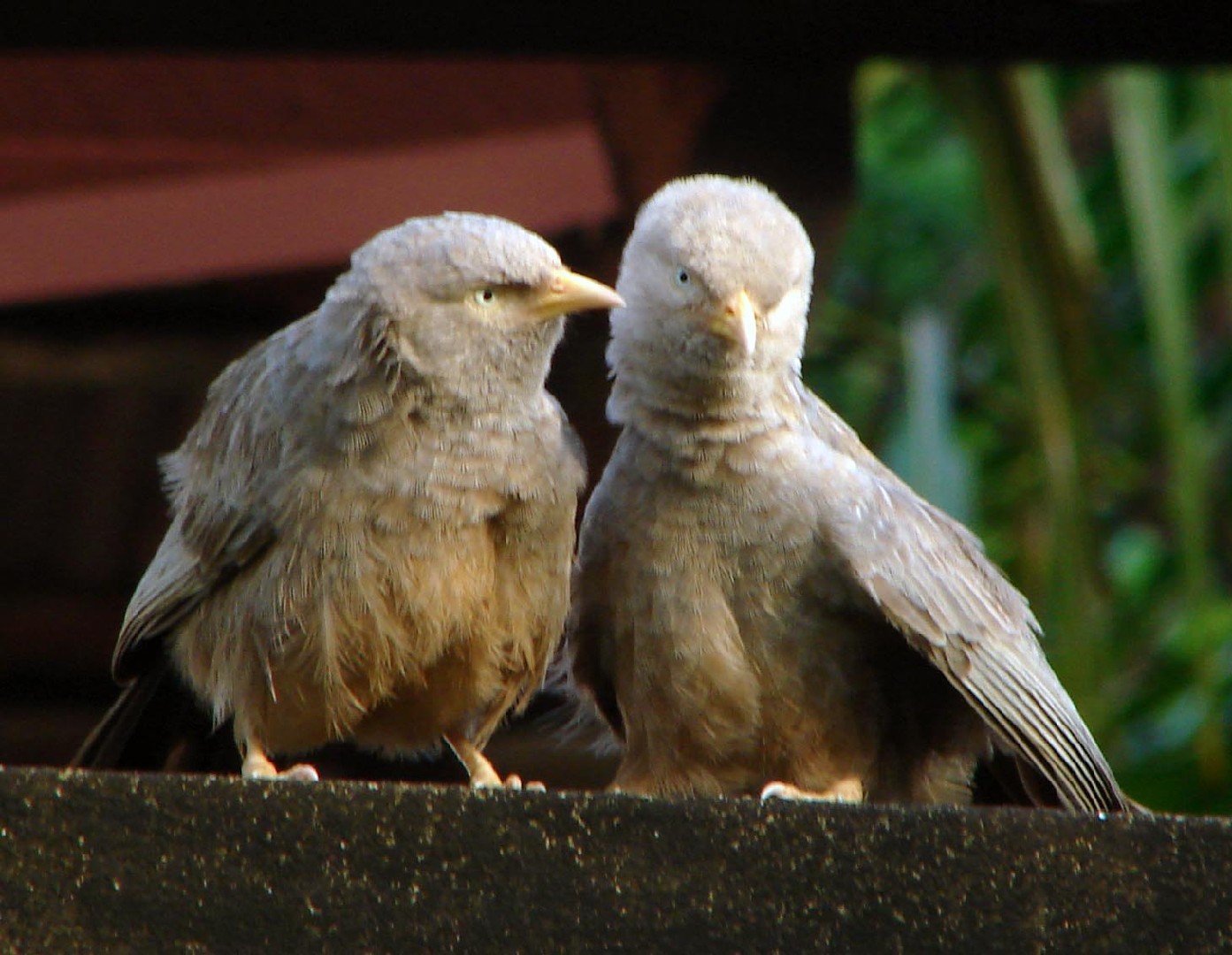Yellow-billed Babbler
A species of Turdoides Scientific name : Argya affinis Genus : Turdoides
Yellow-billed Babbler, A species of Turdoides
Botanical name: Argya affinis
Genus: Turdoides
Content
Description People often ask General Info
Description
These birds have grey brown upperparts, grey throat and breast with some mottling, and a pale buff belly. The head and nape are grey. The Sri Lankan form T. a. taprobanus is drab pale grey. Nominate race of southern India has whitish crown and nape with a darker mantle. The rump is paler and the tail has a broad dark tip. Birds in the extreme south of India are very similar to the Sri Lankan subspecies with the colour of the crown and back being more grey. The eye is bluish white. The Indian form is more heavily streaked on the throat and breast. The Sri Lankan subspecies resembles the jungle babbler, Turdoides striatus, although that species does not occur on the island. Seven distinctive vocalizations have been noted in this species and this species has a higher pitched call than the jungle babbler. The jungle babbler has calls that have a harsher and nasal quality. The taxonomy of this species was confused in the past and confounded with the sympatric jungle babbler and the orange-billed babbler of Sri Lanka. 
Size
23 cm
Colors
Brown
Gray
Nest Placement
Shrub
Feeding Habits
Yellow-billed Babbler primarily consumes insects, supplementing its diet with fruit, nectar, and scraps from human sources. Yellow-billed Babbler exhibits foraging behavior, actively searching for food across various terrains. Unique dietary adaptations or preferences have not been specifically highlighted for this species.
Habitat
This species is patchily distributed in southern India and Sri Lanka. The nominate subspecies is found in Andhra Pradesh, south of the Godavari river and Karnataka south of Belgaum into Tamil Nadu. It prefers lower altitudes and drier habitats than the jungle babbler but sometimes is found alongside it. The Sri Lankan subspecies is found in the lowlands and hills up to about 1500m avoiding heavy forest. 
Dite type
Omnivorous
People often ask
General Info
Feeding Habits
Bird food type
Behavior
The yellow-billed babbler lives in flocks of seven to ten or more. It is a noisy bird, and the presence of a flock may generally be known at some distance by the continual chattering, squeaking and chirping produced by its members. One member often perches high and acts as a sentinel while the remaining members of the flock forage on or close to the ground. They feeds mainly on insects, but also eat fruit, nectar and human food scrap. They have been known to take Calotes versicolor lizard and whip-scorpions. They do not fly long distances, the maximum distance flown non-stop was about 180 m and prior to flying, they usually gain height by moving up a tree or tall shrub. Black drongos, rufous treepies and Indian palm squirrels are often seen foraging near these babblers. Birds wake up before dawn around 6 AM and begin foraging. They are relatively inactive in the hot hours of the day from 1330 to 1630. They assemble in groups around 1900 hrs and preen themselves before going to roost. Members of a group roost next to each other with some juveniles wedging themselves in the middle of the group. When foraging the sentinel bird calls with wing fluttering and hopping. Allopreening is a common activity, particularly in winter, and members may beg for food from other members. Yellow-billed babblers particularly like to take baths, and may visit birdbaths in their general territories, usually around late afternoon to evening time. Sometimes these birds have been observed visiting birdbaths at around 18:30hours, after sunset, when darkness is beginning to set in. A study in the Sivakasi plains noted that groups had a home range of 0.4 km and the population density was about 55 birds per km. 
Distribution Area
This species is patchily distributed in southern India and Sri Lanka. The nominate subspecies is found in Andhra Pradesh, south of the Godavari river and Karnataka south of Belgaum into Tamil Nadu. It prefers lower altitudes and drier habitats than the jungle babbler but sometimes is found alongside it. The Sri Lankan subspecies is found in the lowlands and hills up to about 1500m avoiding heavy forest. It is a common garden bird and frequently visits urban and suburban areas. 
Species Status
Not globally threatened.
Scientific Classification
Phylum
Chordates Class
Birds Order
Perching birds Family
Laughingthrushes Genus
Turdoides Species
Yellow-billed Babbler 